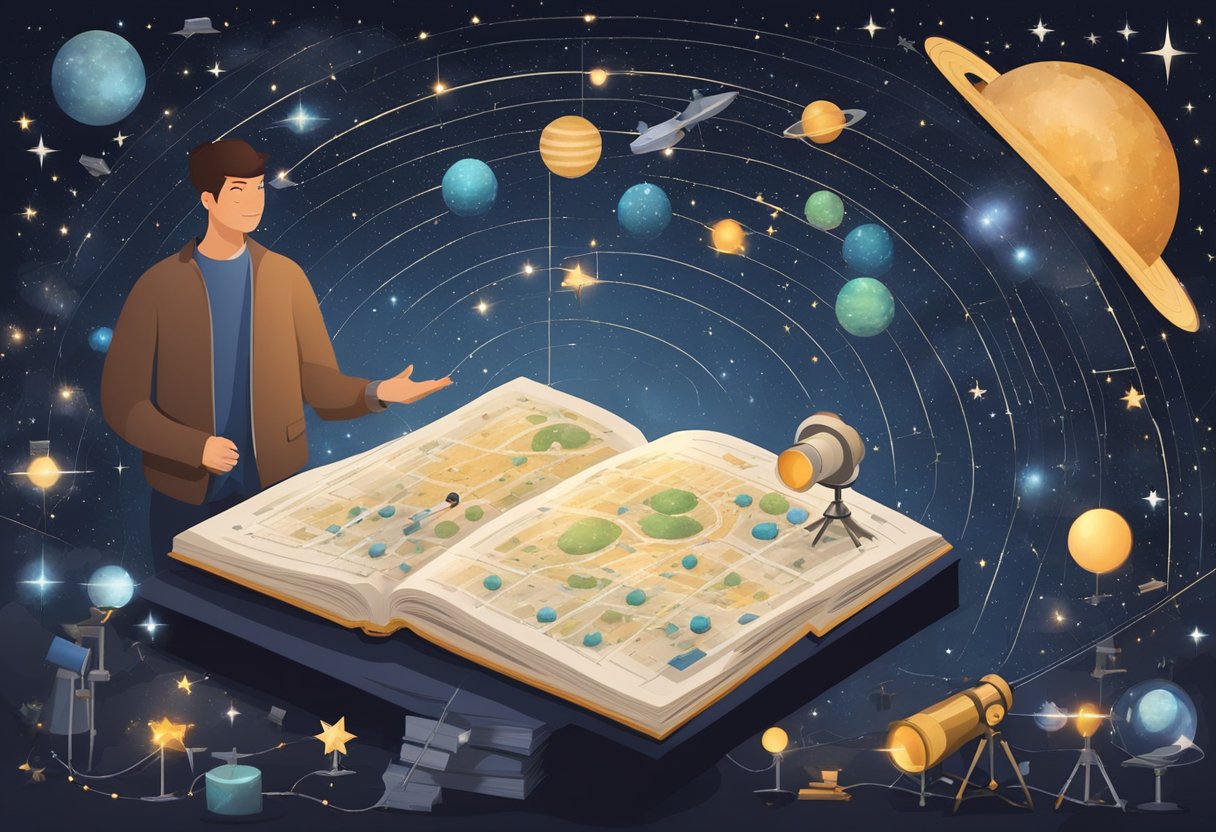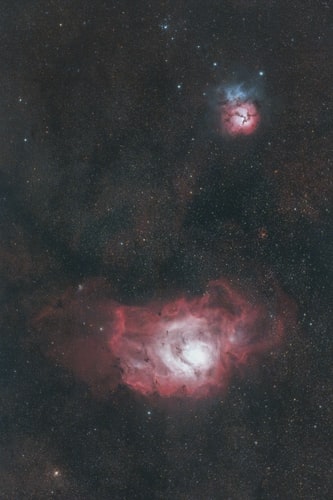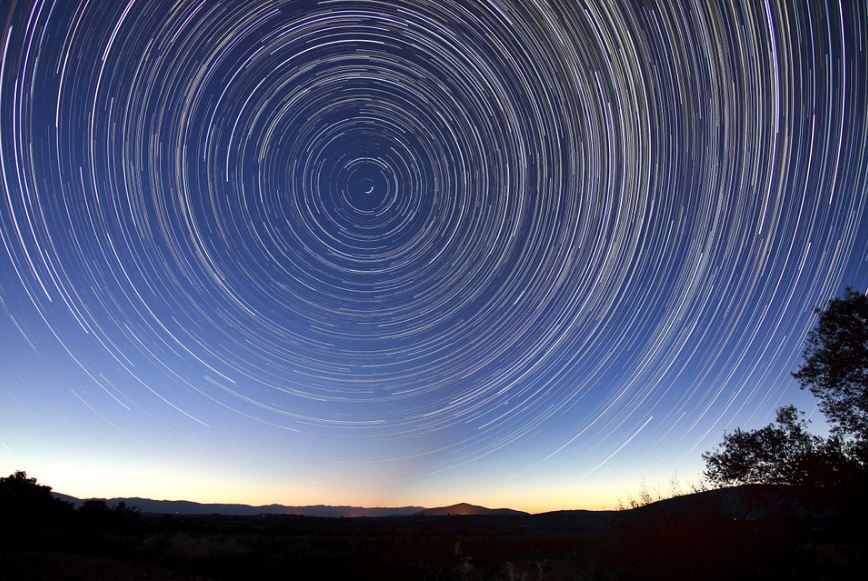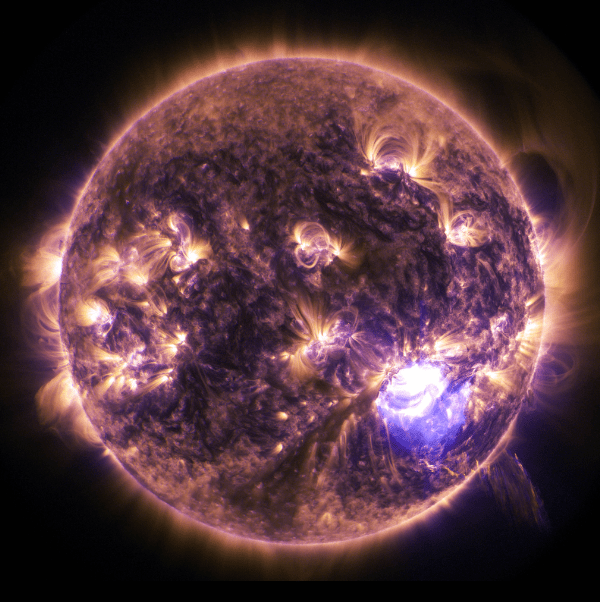How to Use a Star Chart for Stargazing: A Beginner's Guide

Stargazing is a wonderful way to connect with the universe, but it can be tricky without the right tools. To make the most of your stargazing experience, learning how to use a star chart is essential. A star chart, also known as a sky map, is a circular map that shows the stars and constellations visible at a specific time and place. This guide will help you understand how to align the map with the night sky and navigate the heavens above.
Using a star chart starts with getting oriented. Hold the chart above your head with the horizon edges aligned to match the direction you're facing. For example, when looking towards the southern sky, the south edge of the chart should be at the bottom. This way, the stars and constellations on the map will align with what you see in the sky.
One crucial tip is to locate two stars from a familiar constellation, such as the Big Dipper, and compare their positions on the star chart. This will help you measure the distance between stars and get a sense of scale. As you become more comfortable using the chart, you’ll find it easier to navigate and identify various celestial objects, making your stargazing nights more enjoyable and educational.
Understanding the Basics
Using a star chart can greatly enhance your stargazing experience. It helps you identify constellations, planets, and even distant galaxies in the night sky.
What Is a Star Chart?
A star chart is a map of the night sky. It shows the positions of stars, constellations, and other celestial objects at a specific time and location. It usually has a circular shape with the edge representing the horizon. When you hold it over your head and align it with the directions, the visible stars should match up.
Star charts can be physical maps or digital apps. A physical star chart is often made of cardboard or plastic. Digital versions might include extra features like a compass or search tools. They are useful for both beginners and experienced stargazers.
The Components of the Night Sky
The night sky includes various celestial objects. Stars are the most visible, often grouped into constellations, which are patterns recognized over thousands of years. Planets like Venus and Mars can also be seen, usually much brighter than stars. Galaxies like the Andromeda Galaxy appear as faint, fuzzy spots in the sky and are awe-inspiring to spot.
Knowing key constellations helps in navigating the sky. The Big Dipper, for example, is a part of Ursa Major and can point you to Polaris, the North Star. This helps in orientating your star chart. Understanding these components makes it easier to use a star chart effectively for stargazing.
Getting Started with Star Charts
A star chart is an essential tool for anyone interested in stargazing. To effectively use a star chart, it's important to choose the right chart and learn to identify key celestial objects.
Selecting Your First Star Chart
When selecting your first star chart, consider a circular sky map. This type of chart is user-friendly and represents the entire night sky. The outer edge of the circle matches the horizon, while the inside shows visible stars and constellations.
Look for charts that include right ascension and declination coordinates. Right ascension measures how far east an object is from the vernal equinox, while declination measures how far north or south an object is from the celestial equator. These markers help you pinpoint exact locations in the sky.
Printed charts are a good start, but digital apps offer interactive features like highlighting major celestial events. Choose a star chart that fits your needs and preferences for a more enjoyable stargazing experience.
Identifying the Major Celestial Objects
After choosing your star chart, the next step is recognizing key celestial objects. Begin with the Big Dipper, found in the constellation Ursa Major. This group of seven bright stars is easy to spot and serves as a reference point.
From the Big Dipper, find the North Star, Polaris, by tracing a line from the two outer stars of the Big Dipper's bowl. Polaris always points north and is crucial for orientation.
Next, acquaint yourself with other prominent stars and constellations such as Orion and Cassiopeia. Use the chart to locate their positions through right ascension and declination coordinates.
Practice matching the stars you see with those on the chart. Over time, you’ll get better at spotting constellations and navigating the night sky.
Setting Up for Observation
Successful stargazing starts with choosing the optimal time and location. Light pollution can greatly impact your experience, so understanding and minimizing it is crucial.
Choosing the Right Time and Location
Picking the right time and place for stargazing is essential. The best times are during new moons when the sky is darkest. Clear nights without clouds provide the best visibility. Aim for locations far from city lights, such as rural areas or designated dark sky parks.
When setting up, it’s a good idea to arrive before dark. This allows time to set up telescopes, binoculars, and star charts. Bring a red flashlight to read charts without affecting your night vision. Comfortable seating and warm clothing make the experience enjoyable. Remember, patience is key. Distant celestial objects might take a few moments to locate.
Understanding Light Pollution
Light pollution from urban areas can obscure many stars and celestial bodies. Streetlights, buildings, and vehicle lights contribute to this. To reduce its effects, travel to locations with minimal artificial light. Use light pollution maps to find dark sky areas.
Even small changes can help. Shield outdoor lights at home or use lower-intensity bulbs. When observing, avoid using white light which hampers night vision. Prefer red lights instead. In highly light-polluted areas, focus on brighter objects like planets and the moon, which remain visible despite the glare.
Navigating the Sky
Understanding how to navigate the night sky is essential for any stargazer. Key techniques include using nearby landmarks and employing tools like a planisphere and compass points to locate celestial objects effectively.
Finding Your Bearings using Landmarks
One of the simplest ways to navigate the night sky is by using landmarks. Observers can use features such as tall trees, buildings, or mountains to help orient themselves. This method is especially useful for beginners who might feel overwhelmed by the vast array of stars.
A common starting point is locating Polaris, the North Star. To find Polaris, locate the Big Dipper constellation. Draw a line from the outer edge stars of the dipper's bowl, leading to Polaris. Polaris remains almost stationary in the sky, making it a reliable marker for finding the north.
Using a Planisphere and Compass Points
A planisphere, a circular star chart, helps in identifying stars and constellations at any time of the year. When using a planisphere, match the date and time on its movable disk to the current date and time. Hold the planisphere above your head, aligning it with compass points.
To use the compass points, face north with the planisphere, ensuring the map aligns with the horizon. Compass points such as North, South, East, and West guide the orientation of the planisphere and help in identifying objects in specific segments of the sky. Many modern stargazing apps also have compass features, adding digital convenience to celestial navigation.
Reading Star Charts

Reading star charts can help you find constellations, stars, and other celestial objects. Accurate knowledge of coordinates and star patterns is crucial for efficient stargazing.
Interpreting Celestial Coordinates
Celestial coordinates on star charts work similarly to geography. Right Ascension (RA) is like longitude and measures east-west positions in the sky. RA is often given in hours, minutes, and seconds. Declination (Dec), similar to latitude, measures north-south positions and is noted in degrees, minutes, and seconds.
The direction north on star charts points towards Polaris, the North Star. East is to the left of north, unlike ground maps where it’s to the right. This distinction is key because you look up at the sky, not down like on a map. By understanding these coordinates, users can pinpoint celestial objects accurately.
Identifying Constellations and Stars
To identify stars and constellations, start with the brighter, more recognizable ones. A useful starting point is the Big Dipper in Ursa Major. This formation helps locate the North Star, Polaris, by following the "pointer" stars.
Star charts usually highlight magnitude, indicating star brightness. Brighter stars have lower magnitudes, often bolded on the chart. By overlaying the chart above your head, align it with the horizon. Larger constellations like Orion are easier to spot and serve as reference points for finding smaller ones.
By familiarizing yourself with these patterns, you can gradually recognize more stars and constellations. This practice enhances your stargazing and helps you navigate the night sky with confidence.
Technologies and Tools for Stargazers
Modern stargazers have a wealth of tools to enhance their experience. From traditional planispheres to advanced smartphone apps, technology has greatly advanced how we explore the night sky.
From Planispheres to Smartphone Apps
Planispheres are classic tools for stargazing. They consist of two rotating discs that show the stars visible on any given night. Simple and reliable, they help users quickly locate constellations.
Yet, as technology has evolved, so too have the tools. Smartphone apps like SkyView and Star Walk offer interactive star maps. These apps use GPS to match the night sky with the screen, making it easy to identify stars and planets. Simply point your phone at the sky, and the app will do the rest.
Star maps provided by these apps are not just accurate but also user-friendly. They allow for zooming in and out, and can show detailed information about celestial objects. This combination of accessibility and precision has made smartphone apps popular among both beginners and experienced stargazers.
The Advancements in Digital Star Charts
Digital star charts are an advancement over traditional paper charts. They offer real-time updates and can be customized for any location and time. Programs like Stellarium and Starry Night have become invaluable tools. These software solutions feature detailed databases of stars, planets, and other celestial bodies.
With digital star charts, users can simulate the night sky for any date and place, making it easier to plan stargazing sessions. The ability to track celestial events, like meteor showers and eclipses, is another significant benefit.
Beyond this, many digital charts provide educational content. They often include mythology, history, and scientific facts about the stars and constellations. This enriches the stargazing experience, providing more than just visual pleasure.
By combining visual accuracy with educational resources, digital star charts make stargazing more informative and engaging.
Exploring the Deeper Universe
Stargazing is not just about looking at stars; it also involves discovering deep-sky objects and using telescopes and binoculars to see these amazing sights.
The Wonders of Deep-Sky Objects
Deep-sky objects include nebulae, star clusters, and galaxies. These are often too faint to be seen with the naked eye, making them special targets for those with telescopes or binoculars.
Nebulae are clouds of gas and dust where new stars are born. The Orion Nebula is a popular one for beginners.
Star clusters are groups of stars that are close to each other, like the Pleiades or the Beehive Cluster. Galaxies are massive systems of stars, like the Andromeda Galaxy, the closest spiral galaxy to the Milky Way.
When hunting for deep-sky objects, a star chart is crucial. It helps identify where and when these objects are visible. Choose a clear, dark night to reduce light pollution, making these dim objects easier to spot.
The Role of Telescopes and Binoculars
Using telescopes and binoculars can greatly enhance stargazing experiences. Telescopes are essential for seeing deep-sky objects in detail. Reflector telescopes use mirrors to collect more light and offer clear views of distant objects. Refractor telescopes use lenses and are great for viewing planets and larger star clusters.
Binoculars are more portable and easier to use for beginners. They provide a wide view of the sky, making it simple to locate star clusters and some bright nebulae. Look for binoculars with 7x50 or 10x50 specifications for optimal stargazing.
A stable tripod can steady both telescopes and binoculars, enhancing the clarity of what you see. Hunting for deep-sky objects requires patience and practice, but the beauty revealed through these tools is well worth the effort.
Special Celestial Events
Stargazing offers an incredible view of the night sky, and certain celestial events can make the experience even more enjoyable. These include eclipses, meteor showers, and seasonal changes in the night sky.
Eclipses and Meteor Showers
Eclipses are some of the most spectacular events visible from Earth. A solar eclipse occurs when the Moon passes between the Earth and the Sun, casting a shadow on Earth and temporarily blocking the Sun's light. These can be total, partial, or annular. During a total solar eclipse, day briefly turns to night. A lunar eclipse happens when the Earth passes between the Sun and the Moon, and it can be seen anywhere the Moon is visible at night.
Meteor showers provide another thrilling sight. These occur when the Earth passes through the debris stream of a comet. The Perseid meteor shower, which peaks in August, and the Geminid meteor shower in December are especially popular. During peak times, dozens or even hundreds of meteors may be visible each hour, depending on viewing conditions.
Seasonal Changes in the Night Sky
The night sky changes with the seasons, offering new constellations and stars. In the winter, the constellation Orion is dominant, with its bright stars Betelgeuse and Rigel. Spring brings Leo and Virgo into view, while Scorpius and Sagittarius become prominent in the summer. Autumn showcases Pegasus and Andromeda, along with the Andromeda Galaxy, the closest spiral galaxy to the Milky Way.
Using a star chart helps identify these seasonal shifts. Align the chart to your current date and time, and it will show which constellations and stars are visible. This way, stargazers can plan their observations to catch the sights unique to each season.
Enhancing Your Stargazing Skills
To truly appreciate the night sky, developing personal skills and connecting with others who share the same interest can be immensely rewarding. Here are some practical ways to enhance your stargazing capabilities and enjoy a deeper connection with the cosmos.
Developing Patience and Skills
Patience is vital for any stargazer. Observing celestial objects requires waiting for the perfect conditions. Whether a novice or advanced, taking time to learn the night sky is crucial. Practice identifying constellations and using a star chart correctly.
Regular stargazing helps improve these skills. Using tools like planispheres and mobile apps speeds up the learning process. Practice aligning star charts with the visible sky and locating key stars. This methodical approach ensures confidence in navigating the night sky.
Keep a stargazing journal. Note down observations, conditions, and learnings. Over time, this builds a deeper understanding of celestial movements and enhances observational skills.
Participating in Astronomy Communities
Joining an astronomy group or online community offers substantial benefits. Amateur and advanced stargazers share tips, arrange joint observation sessions, and provide valuable guidance.
In-person meetups and virtual forums offer platforms for exchanging knowledge and discussing equipment or findings. Participate in stargazing events organized by local planetariums or astronomy clubs. Such events often have experts who can provide practical advice.
Students can benefit from educational programs. Many schools and teachers use digital star charts and apps to make learning interactive, involving activities such as identifying stars and tracking planets. Collaborative stargazing efforts foster a sense of community and shared learning.
Becoming part of these communities enhances learning and makes the stargazing experience more enjoyable and insightful. Sharing discoveries and learning from others enriches the knowledge and passion for astronomy.
The Intersection of Culture and Astronomy
Astronomy has long played a significant role in human culture, affecting mythology, history, and science. Various cultures have their own stories tied to constellations like Orion and stars like Betelgeuse.
Mythology and the Stories in the Stars
Mythological stories are often linked to constellations. For example, Orion, a well-known constellation, represents a hunter in Greek mythology. Orion's story involves his hunting adventures and his tragic end, placed by Zeus among the stars.
Many cultures used the stars to explain natural phenomena. The star Betelgeuse, part of the Orion constellation, was seen by the ancient Egyptians as the arm of Osiris, a god of the afterlife. These stories helped people understand their world and passed down important cultural values and lessons.
Astronomy in History and Science
Ancient civilizations used astronomy for practical purposes, like navigation and agriculture. The Greeks made significant contributions to early astronomy, with philosophers like Ptolemy creating star charts that helped sailors navigate the seas.
In history, astronomical observations were crucial during the Renaissance. Scientists like Galileo used telescopes to study the stars, challenging existing beliefs and paving the way for modern science.
Throughout centuries, constellations and celestial objects such as Orion and Betelgeuse have held significant scientific and cultural importance, blending the world of mythology with that of historic scientific discovery.
Astrophotography for the Enthusiasts
Astrophotography allows enthusiasts to capture stunning images of the night sky, showcasing the beauty of stars, planets, and deep-sky objects. This section explores capturing techniques and necessary equipment.
Capturing the Night Sky
Astrophotography involves taking long-exposure photographs of the sky to capture faint objects. To start, enthusiasts need to find a dark location with minimal light pollution.
Using a tripod and setting the camera to a high ISO and long exposure can help capture detailed images of stars and constellations.
For deep-sky objects like galaxies and nebulae, a telescope equipped with a camera is ideal. Aligning the telescope properly is crucial to avoid star trails caused by Earth's rotation. Polar alignment and tracking mounts can help keep objects in view during long exposures.
Essential Equipment and Techniques
Astrophotography requires specific gear for best results. A DSLR or mirrorless camera with manual settings is essential. Fixed lenses with wide apertures (e.g., f/2.8 or f/4), or specialized astrophotography lenses, are also recommended.
Key Equipment:
- Tripod: Provides stability for long exposures.
- Telescope: Enhances detailed imaging of deep-sky objects.
- Eyepiece: Necessary for attaching cameras to telescopes.
To reduce noise in photos, use low ISO settings and multiple short-exposure shots combined in post-processing. Software like Adobe Photoshop or Lightroom is useful for stacking images and enhancing details.
Using filters, such as light pollution filters, can improve image quality from urban areas. Balancing exposure settings, ensuring proper focus, and being patient are all part of achieving breathtaking astrophotography.
Learning Resources and Guides
Learning how to use a star chart can be greatly enhanced through books and hands-on experiences. Below are some resources that can help beginners and seasoned stargazers alike.
Books and Atlases for Stargazers
Books and atlases are valuable for learning about star charts and the night sky. Sky Atlas 2000.0 by Wil Tirion and Roger W. Sinnott is a highly recommended resource.
- It maps 81,000 stars and 2,700 celestial objects.
- Ideal for telescope and binocular users.
Other books, like A Beginner's Guide to Mastering Star Charts, offer clear instructions on using circular maps to find celestial objects. The ease of understanding and practical tips make these books a crucial part of any stargazer's library. Consulting various books allows users to understand different approaches to reading star charts.
Hands-On Learning with Star Atlases
Using star atlases offers practical learning opportunities. A good star atlas like Sky Atlas 2000.0 provides detailed maps that make it easier to locate stars and constellations.
- Star atlases include grids and scales for distance measurements.
Interactive tools like planispheres, which are rotating star charts, help users match the chart with the current night sky. Such hands-on tools make understanding the layout of stars more intuitive. By aligning the chart with the sky, users can identify and remember star patterns better. This method of practice strengthens one’s stargazing skills.




